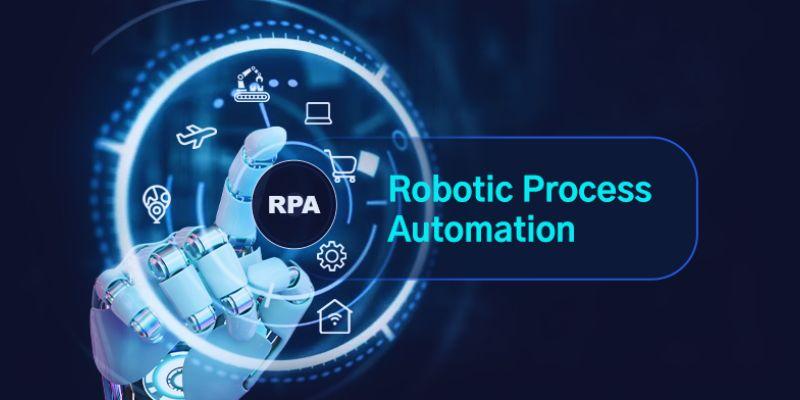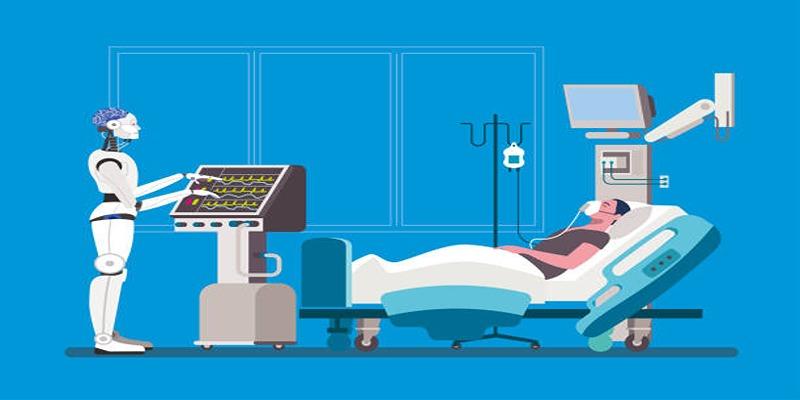Robotics and Artificial Intelligence (AI) are becoming the game changer and the defense is not taken an exception. Governments across all regions of the world are investing in Smart technologies to participate in achievement of security, improved efficiency, reduction of risks and faster decision making. The article attempts to learn how AI and robots can transform the defense systems and the future.
The Rise of AI and Robotics in Defense
 In the defense industry, AI and robotics have been quickly increasing because of their effectiveness in carrying out multiple acts in detail and swiftly. The technologies are transforming the conventional warfare including monitoring, drone guns, etc.
In the defense industry, AI and robotics have been quickly increasing because of their effectiveness in carrying out multiple acts in detail and swiftly. The technologies are transforming the conventional warfare including monitoring, drone guns, etc.
Increased Investment in Smart Defense
Technology based defense budget is becoming a priority of the nations now. The present day tools of AI are capable of giving a real time analysis of the data collected by satellites, drones and sensors on the ground. Robotics, in its turn, is engaged in the operations that are either too risky or too complicated to be performed by a human.
Changing Nature of Warfare
Traditionally, people used to defend themselves with the help of human soldiers and conventional equipment. Nowadays, using intelligent technologies and self-driving robots, numerous activities do not have to be performed by people directly. AI currently supports or even enables surveillance, logistics, threat detection, even decision-making.
Key Benefits of AI in the Defense Industry
In the sphere of defense, artificial intelligence introduces efficiency and accuracy of unknown levels. Through automation of difficult procedures and improved decision making capabilities, AI also allows the most efficient use of the available resources and minimize risks faced by human staff.
Faster Decision Making
Within few seconds, AI systems can analyse a huge amount of data. To give an example, AI can detect potential threats through pattern recognition during its use in military operations. This aids the military leaders to make quick and precise decisions.
Predictive Maintenance
AI tools are very efficient in surveillance equipment. They are able to identify minor flaws in tanks, ships or aircrafts before they append into bigger problems. The preventative maintenance minimizes downtime and economizes on repair.
Improved Training Simulations
The simulators utilizing AI facilitate true-to-life training in the military. Such systems enable the soldiers to train on virtual environments where they face realistic encounters. It is less risky, affordable and more adaptive as compared to conventional training.
Robotic Systems Reshaping Defense Operations
Robotic systems are revolutionizing modern defense strategies by enhancing efficiency and minimizing human risk. From unmanned aerial vehicles to autonomous ground robots, these technologies are transforming how missions are planned and executed.
Unmanned Aerial Vehicles (UAVs)
Also known as drones, UAVs are widely used for surveillance and monitoring. These robotic systems can fly long distances, collect video footage, and transmit data without putting any pilot at risk.
Ground Robots for Risky Missions
Ground robots are used in situations that are dangerous for human soldiers. For instance, they can enter unknown buildings, defuse explosive devices, or deliver supplies to remote areas. These robots are often remote-controlled or guided by AI.
Autonomous Naval Systems
Navies are now using robotic submarines and surface vehicles for underwater exploration, mine detection, and port security. These tools enhance maritime safety and reduce the need for large human crews.
AI for Cybersecurity and Intelligence
Advancements in AI have revolutionized the field of cybersecurity and intelligence, enabling faster and more accurate threat detection. AI-driven systems can analyze vast amounts of data in real-time to identify vulnerabilities and predict potential cyberattacks.
Threat Detection and Analysis
AI can help detect digital threats before they cause harm. Military networks deal with sensitive information, and AI systems can monitor these networks continuously. If a threat is detected, the system alerts defense teams immediately.
Enhanced Intelligence Gathering
AI algorithms process satellite images, social media, and communication signals. They can extract useful information and patterns that human analysts may miss. This improves national intelligence and helps in planning military strategies.
Ethical and Security Concerns
The integration of AI in defense raises significant ethical and security challenges. Questions about accountability, bias in algorithms, and the risks of autonomous decision-making dominate discussions in this domain.
Lack of Human Oversight
A key concern with AI in defense is the risk of removing human control from critical decisions. While autonomous systems are fast and efficient, they must follow strict ethical guidelines to avoid unintended harm. Decisions involving human lives, especially in combat, require moral judgment and context that AI cannot provide. Military leaders must ensure AI supports human judgment rather than replacing it. Oversight mechanisms are essential to maintain accountability and prevent catastrophic mistakes.
Risk of Hacking and Misuse
AI systems in defense rely on software and networks, making them vulnerable to hacking. If compromised, these systems could lose sensitive data or deploy dangerous weapons improperly. The threat isn’t just external—misuse by internal actors is also a risk. To address this, security must be prioritized in every stage of development, with rigorous testing, regular updates, and fail-safes to prevent failures or unauthorized use.
The Future of AI and Robotics in Defense
 The future of AI and robotics in defense is poised to revolutionize military operations and strategy. These advancements promise increased efficiency, precision, and adaptability on the battlefield.
The future of AI and robotics in defense is poised to revolutionize military operations and strategy. These advancements promise increased efficiency, precision, and adaptability on the battlefield.
Smarter Collaboration Between Humans and Machines
Integrating AI into defense systems aims to assist, not replace, soldiers in complex operations. Future strategies will focus on combining human expertise with machine efficiency. For example, AI can analyze vast amounts of battlefield data in real time, identifying patterns humans might miss.
This enables soldiers and commanders to focus on strategic decisions rather than raw data analysis. The synergy between human intuition and AI precision could greatly improve decision-making and response times during critical missions.
Greater Use of Swarm Technology
Swarm robotics deploys groups of small robots working together toward a goal, such as surveillance, search-and-rescue, or delivering supplies in dangerous areas. AI allows these swarms to coordinate efficiently, sharing data in real time and adjusting strategies to tackle complex tasks. For example, during a search mission, each robot could scan a specific area, covering large terrains quickly while sharing findings to optimize efforts.
Advanced Defense Communication
AI is set to transform defense communication, making it faster and more efficient. Real-time language translation tools could break down barriers, enabling seamless collaboration among international teams. Instant data-sharing ensures critical information reaches the right people at the right time, enabling quicker responses. Smart systems could also analyze data and provide insights or alerts, improving coordination and teamwork across global defense forces. These advancements could create a highly effective and unified network.
Final Thoughts
AI and robotics are reshaping the defense industry. From battlefield operations to cybersecurity, these technologies bring speed, precision, and safety. While challenges like ethics and data security remain, the future of defense will rely more on machines working hand-in-hand with humans. As investment grows and innovation continues, smart systems will become the backbone of modern defense strategies.












